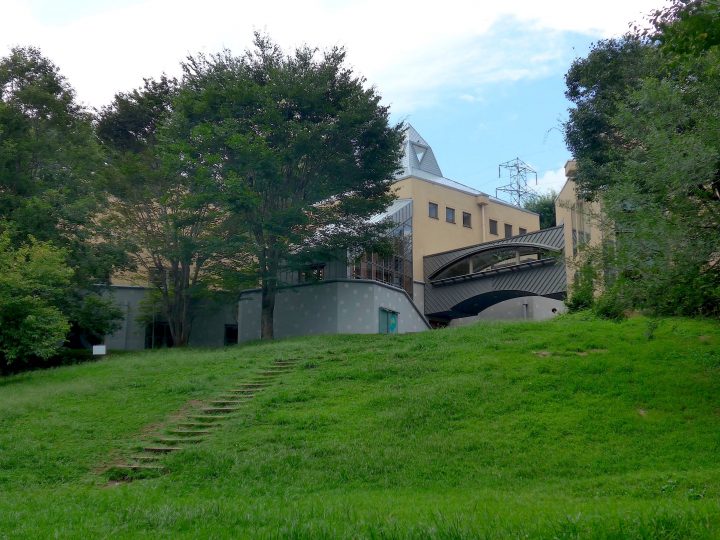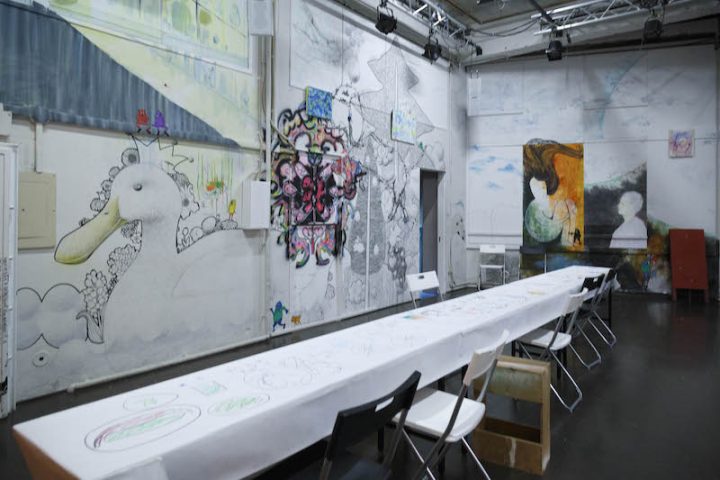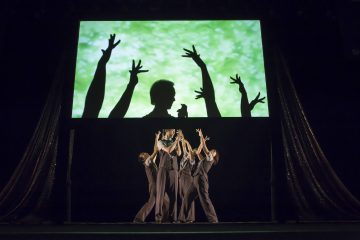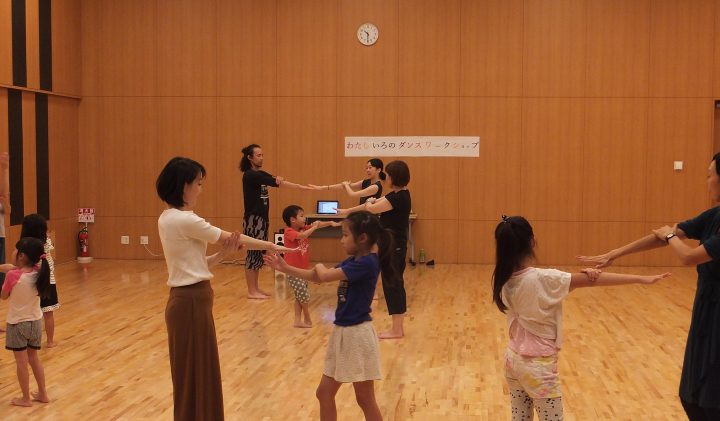One Thousand and One Nights Outside VOL.2 "Red Brick Dance Crossing for Ko Murobushi" Interview with Keisuke Sakurai and Yoshio Otani
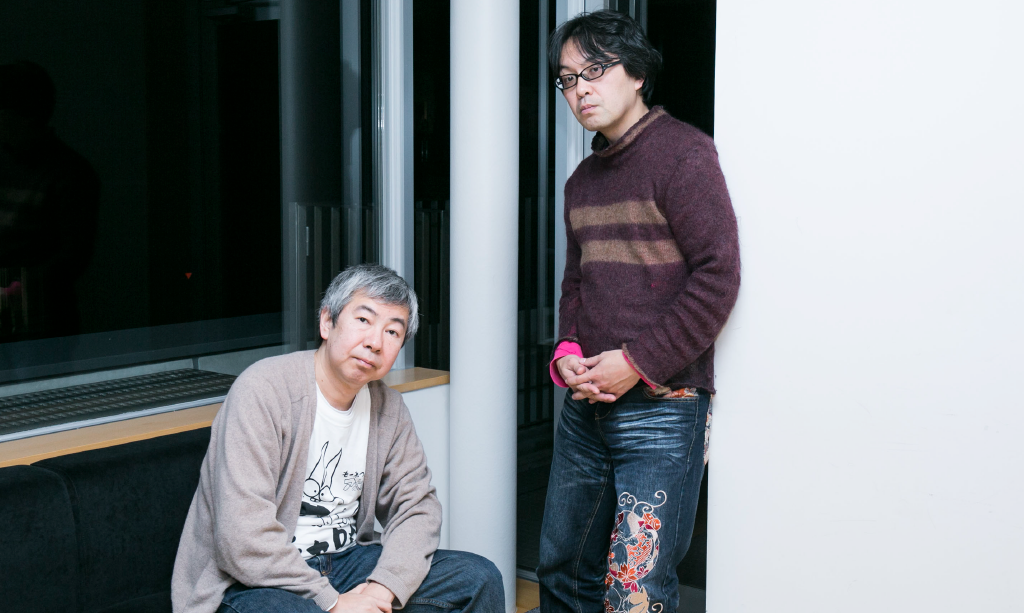
Text: Taisuke Shimanuki Photo (Portrait): Masamasa Nishino
In June 2015, the performing arts world was shocked by the sudden death of dancer and choreographer Ko Murobushi. He died suddenly at the airport on his way to Germany for a workshop after a performance in Mexico. It was a sad sudden farewell. However, it may have been a fitting farewell for Murobushi, who spent most of his life traveling.
And so, in February of this year, an event will be held in memory of Murobushi. The title is "A Thousand and One Nights Outside Vol. 2." Planned as the second event that Murobushi himself has organized, dancers, organizers, and critics connected to him will participate and carry out various projects over five days. Among them, a two-day dance event will be organized by critic Sakurai Keisuke and musician Otani Yoshio. What thoughts do these two men, who were closely involved with Murobushi, have for this event?
Who was Ko Murobushi? We interviewed the two men to find out the answer.
Will the person himself be angry in the afterlife? "Red Brick Dance Crossing for Ko Murobushi"
On June 18th of last year, dancer and choreographer Ko Murobushi suddenly passed away while traveling in Mexico. The "Outside One Thousand and One Nights VOL.2," which starts on February 18th, is a memorial event being held in his honor.
Sakurai: Although that's how it ended up, Murofushi himself had originally been planning to do a sequel to "Outside Thousand and One Nights" at the Red Brick Warehouse. In the fall of 2013, we did VOL.1, which Murofushi produced, and this was supposed to be the second installment.
Both Sakurai and Otani were involved in VOL.1 as performers.
Sakurai: Yes. So, although we are not carrying on Mr. Murobushi's wishes, we decided to do it again this time as we did last time. As one of the programs, we jointly planned "Red Brick Dance Crossing for Ko Murobushi (ADX4KM)". Therefore, we have asked the people who appeared in VOL.1 to participate in the performances and symposiums as much as possible.
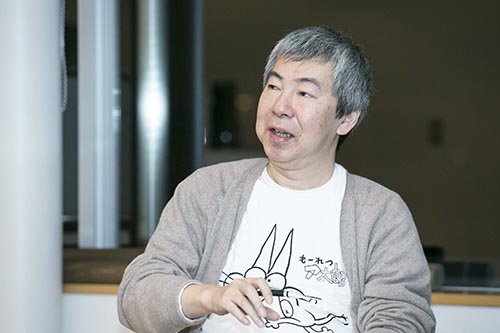
Having said that, Sakurai-san also tweeted, "I'll make it so that Murobushi-san will be angry in the afterlife" (laughs).
Sakurai: I want to show Murobushi something that will make him angry, or rather, make him smile wryly (laughs). I didn't want to make it a sad dance crossing where people who were related to Murobushi remember the deceased.
Otani: That's right. During VOL.1, I worked with Murofushi as a sort of musical director, and he had already asked me to work on VOL.2, so I didn't suddenly change course just because he passed away.
Sakurai: Until now, I've been curating Dance Crossing on my own, but this time it's "for Ko Murobushi," so I thought I'd like to plan it together with Otani-san.
Dance Crossing refers to the "Azumabashi Dance Crossing" that ran from 2004 to 2013. Murofushi-san also performed there, and many contemporary dancers and artists have expanded their fields of activity since then. "ADX4KM" is a two-night-only crossing project between a legendary dance event and a legendary dancer.
Sakurai: One of the sub-themes was to consider Murofushi's personality and the essence of his dance, which isn't a big deal (laughs).
Meeting Ko Murobushi
I see. By the way, what kind of artist was Ko Murobushi? He is internationally recognized as a representative of Butoh, and as someone who doesn't know much about it, I tend to assume he was an authority on Butoh.
Sakurai: This is just my opinion, but I think Murofushi didn't like being limited to the narrow confines of butoh. That's why he was the type of person who would proactively interact with strangers and young people like me.
Otani: Of course, he was a founding member of Maro Akaji's Dairakudakan company, but at some point he went on to work solo without having his own company, so I think he is someone who exists outside the boundaries of the genre.
Sakurai: And we're not based in Japan. Or rather, we don't have a base and we spend half the year touring the world performing.
Otani: Butoh has a strong sense of master and disciple, but you have avoided having direct disciples or secret teachings. I don't know if that was a conscious choice, though.
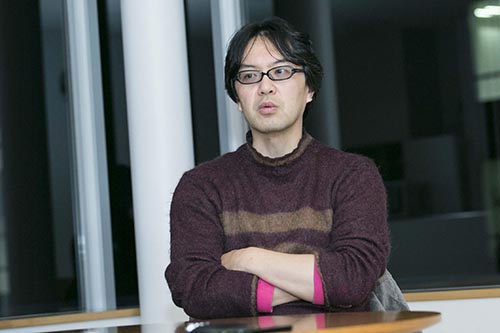
He started out in Butoh and continued on his own path. Could you tell us how you two met Mr. Murofushi?
Sakurai: In 1998, there was a symposium for the 13th anniversary of Hijikata Tatsumi's death. There, I appeared as a panelist with theater critic Kou (Hideyoshi). As expected, it turned into a fight with the audience (bitter smile). In short, Kou and I didn't go so far as to say, "Maybe Butoh is no good anymore," but we did say provocative things. Butoh at the time was often spoken of as a symbol of anti-modernity, or as a pre-modern representation, linked to ecology, but I said things like, "In a situation where going to the countryside on weekends to till the fields has become a leisure lifestyle, I wonder whether such a natural orientation can be effective in real society." So young Butoh artists and Butoh critics got angry and said, "Don't make fun of us!"
While we were having such a lively exchange with the audience, Murofushi, who was in the audience, suddenly said something like, "That's why Butoh is no good!". I spoke to him for the first time after the event, but since Murofushi had been overseas for a long time, I had never seen his work myself. So I watched the video he sent me right away and was shocked. He said, "I've never seen Butoh like this!" So I told him, "I want you to do dance in Japan. I'll help you!" and I was involved in Murofushi's production for a while.
Otani: In my case, the event organized by Sakurai-san was the first time I saw Murobushi Ko.
This project took place at SNAC in Kiyosumi Shirakawa, a space jointly rented by Sakurai's Azumabashi Dance Crossing and the contemporary art gallery Mujin-to Production.
Otani: We had two days to spare after Murofushi-san returned to Japan, so we were thinking about planning something. It was 2011, right after the Great East Japan Earthquake. Chim↑Pom had an exhibition there right before that.
Sakurai: The "REAL TIMES" exhibition. We knocked the temporary wall (work) we were using in the exhibition onto the floor and used it as a stage for the dancers.
Otani: I've been actively involved in performing arts since about 2005, and it was a while before that that I saw the work, but that was the first time we talked together. I still remember that the speaker placement was terrible, the phases clashed, and the volume wasn't loud enough (laughs). So I said, "This won't do," and corrected the placement, and before I knew it, I was in charge of the PA for the event. Murofushi-san brought a CD and told me to "play it at this timing."
Loose (lol).
Otani: That was the first day, and we decided to bring our own equipment and DJ tomorrow. We even took charge of the production, buying old books at a used bookstore and throwing them on stage. Then we had fun fighting at the after-party.
Sakurai: I got so angry that I splashed a glass of water on him (laughs).
Otani: After that, we went to Vienna together in 2014, and maybe we could have gone to South America, but we gave up due to budgetary issues. I felt like I was involved mainly as a dancer and musician. I wanted to continue more.
Listening to their stories, it seems like they both met through some fun quarrels and fun troubles.
Otani: Butoh dancers are quick to pick a fight, aren't they? (laughs)
Sakurai: Murofushi-san is a kind person (laughs). He is strict when it comes to dance and butoh, but he is a gentleman who respects people equally.
Otani: I always go to see the works of young artists. I just pop in. When I was in Japan, I probably saw something almost every day.
Beyond Butoh / Ko Murobushi's Physicality
Both of you see Murobushi as someone who went "outside" Butoh, but what was your impression of his work?
Sakurai: There is a typical image of Butoh. White face, wearing dirty rags, like a zombie, or something Japanese folklore. There is no such impression at all, it's just a single body. There was nothing spooky or surrealistic or oriental mystic or orientalism in the art, costumes, story or music. You could say it was modernist or minimalist. By watching Murofushi's dance, I can understand the essential part of Butoh that Hijikata Tatsumi had in mind.
What is the essence of Butoh?
Sakurai: I think that the Butoh that Hijikata started is about the presence of the body, the body as material. It is different from the illusionistic dance concept of European ballet, which tries to go upwards against the laws of physics, but rather makes the materiality and existence of the heavy body present. There is also an aspect of Butoh as a contemporary art.
Otani: I agree. Murofushi was a modern person. I come from an improvisational background, and our themes are completely the same. How can we make a piece work without a story? How much should we cut out to make a piece work with almost no pieces at hand? And what possibilities does that offer? As a result of pondering this, in the late 1960s, improvisationists arrived at the logic that the performance that can go the furthest is the one that can perform without relying on anything. Murofushi sees Butoh in the context of modern art, while I do it with music. We both had a clear awareness that we were both taking on the theme of a trend in 20th century contemporary art, so we were able to share our dialogue and works right away. In addition to that, we talked about music, about the time and space of soul music and black music. We often talked about how we could bring back the time and space of black music to contemporary dance.
Sakurai: For the ADX4KM PR, we used a photo of Murofushi with tissue stuffed up his nose, which is totally nonsensical. But his dance is really cool...or rather, both are cool (laughs). Many dancers are narcissistic characters who are intoxicated with themselves, but Murofushi has a clear awareness of objectifying his own body, and dances in a way that instantly cuts off all sorts of things.
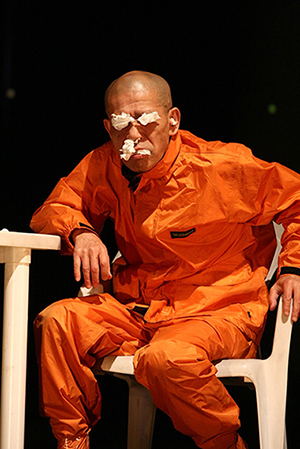
Otani: It's not that I'm cancelling my own method, but I think there was a tendency to accelerate and then consciously stop it. I think it's "prosaic" and I don't become narcissistic because I'm always in a state of division. It's not integrated in an easy-to-understand way, so even when I watch the dance, I can't fully understand what's going on.
Sakurai: Even though he was dancing wildly, he suddenly turned to the audience and muttered, "It's fine if I talk (even while dancing)" (laughs). Sometimes people talk about butoh in terms of modern thought. For example, there is Gilles Deleuze and Felix Guattari's "becoming and transformation," and Murofushi is the one who embodied it. Most dancers usually dance in a set style, and even if they appear to be schizophrenic, it's just a random dance, and they are still intoxicated.
Otani: That's right.
Sakurai: When I follow Murofushi's dance, it's similar to the phrasing of an improvised performance. I think there are similarities to the way Rakugo is told and sumo wrestling, but he has a skillful way of slipping out of the groove. That's where the groove comes from.
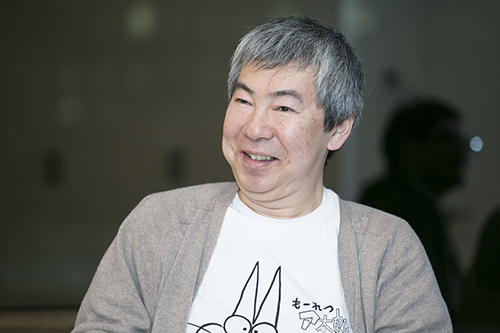
Otani: It's often thought that groove can be created by repeating a phrase over and over, but that doesn't create a groove.
Sakurai: That would just make it into a Bon Odori dance.
Otani: The image is of many rotating gears moving at the same time, interlocking in an invisible way, and ultimately appearing as a complex movement that is completely unpredictable. As a musician, I can understand what they are trying to do, and I am amazed at how difficult it is... but what's also amazing is that it's not difficult to understand.
Sakurai: It's simply fun to look at.
Otani: It's interesting, but technically it's extremely difficult (laughs). If you try it yourself, you'll understand that even creating polyrhythms is difficult. You can't do it unless you have that kind of worldview within yourself in the first place. Good dancers do it unconsciously, though.
Encounter the past with Ko Murobushi
You said that you want ADX4KM to be something that would make Murofushi-san smile wryly, but what exactly would that be?
Otani: It is true that we have gathered people who are currently creating things, people who are always trying things out. Everyone is working in a different direction, so I would like people to experience the disjointed works as a whole, just like Murofushi-san.
Sakurai: There are a total of 19 participants, and they are combining them to create 7 performances over two days, but this time we are focusing on how to bring together different things. It's not like Marcel Duchamp's sewing machine and bat umbrella (laughs). Murofushi-san was very sensitive to such things, so I think he will be interested in the fact that it is unpredictable. If I were to point out a difference from past Azumabashi Dance Crossings, I think this one is more hardcore. I don't think it will feel like a "festival!"
Otani: Not everyone is serious, but I feel like the overall tone is leaning towards seriousness.
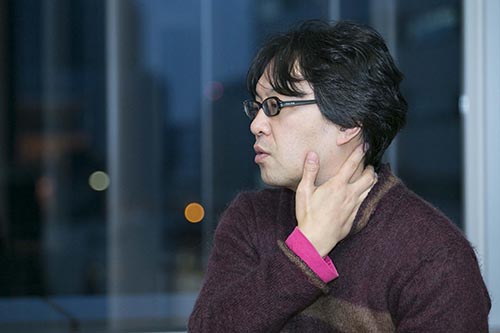
Sakurai: Azumabashi Dance Crossing was created to enhance the overall quality of the show. I felt like I was editing a mixtape, thinking, "This should be the next piece," "I'll leave this part open for five seconds," "I'll close this part," and so on. I couldn't stand to drag on. But I've gotten older and calmer, or maybe I don't mind it anymore (laughs). Rather than the overall flow, I want to properly convey the quality or uniqueness of each piece. In that sense, I'm hardcore.
In addition to "ADX4KM," there will also be a talk session, archival footage of Murobushi from the 70s to the present, and a re-run of "The Frenzied Dance in the Graveyard" and "DEAD 1," which were performed in VOL.1.
Sakurai: The whole thing is the "Thousand and One Nights Outside" that Murofushi wanted to do. I think he wanted to do something that touched on and discussed things other than dance, rather than a festival that focused on dance. In VOL.1, I also talked not about dance, but about demonstrations with Itaru Mita, titled "Expression as Demonstration."
Otani: I watched "Dance Cover" and Hatsune Miku on Nico Nico Douga and talked with Kimura Satoru. Then, the audience said "It's too long!" and I said "Shut up!" and we started arguing again (laughs).
Sakurai: A program that deals with things outside of dance, or that expands dance outward. VOL.2 has that awareness, and at the same time, we do some silly things. I think that will ultimately be a tribute to Murofushi. It's not a retrospective that just says, "We've lost a great man."
Present-oriented, future-oriented.
Otani: No, I don't think about the future. The present is an extension of the continuity from the past, and it's natural that there is a future beyond that, but I can't predict whether it will be wonderful or terrible, that's all I can say. Rather, everyone seems to forget about the past too much. There are too many people who talk about the future when they haven't used up all the past activities and accumulations. The potential in Murofushi's activities has not been used up at all, which is why we are doing VOL.2. The 20th century was the era of records and movies, and a big theme in modern times is how to deal with things that are recorded and always remain.
With the advent and distribution of video and music, the amount of the past that we can learn about has increased dramatically.
Otani: So by thinking about the past rather than the future, my thinking starts to become more active. It's much more fun to be asked, "What happens to the past of dance?"
Sakurai: I can think of so many.
Otani: For example, when I ask "How was Sylvie Guillem at the end of the year?", my head spins wildly (laughs). Murofushi-san has passed away, and his work and activities are of course in the past, but what he has done up until now must still be heading towards the future, and I think that dealing with the past is the same as dealing with the future.
It's an encounter with Ko Murobushi, an encounter with the past. In response, Sakurai, Otani, and other living artists and critics provoke the deceased Murobushi.
Sakurai: I'm thinking of having ucnv glitch Murobushi's performance footage to shreds. The transformed Murobushi will have a session with musicians at "ucnv x Sugadairou x Pardon Kimura" on the 20th and "ucnv x Kukangendai" on the 21st. I had no intention of doing a normal video screening at Dance Crossing, but that's the only place where I'm going to shred Murobushi Ko and revive him (laughs). It's like dismantling, analyzing, and building.
Otani: I'd love to go that far.
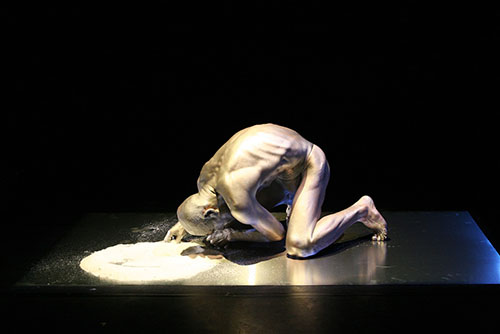
Ko Murobushi Profile
(1947-2015) Studied under Tatsumi Hijikata and participated in the launch of "Dairakudakan" with Akaji Maro and others. After that, he led his own group "Sebi" and the female dance group "Ariadone no Kai" and was active mainly in Europe. In recent years, he has been active both in Japan and overseas with unparalleled solo performances and works featuring the younger generation including "Ko & Edge". He passed away in Mexico on June 18, 2015.
Profile of Keisuke Sakurai
Musician and dance critic. Organizer of "Azumabashi Dance Crossing."
Yoshio Otani Profile
Born in 1972. Music (saxophone, electronics, composition, arrangement, track making) / criticism (jazz history, 20th century music history, music theory). He has written many books, including "The School That Taught Melancholy and Sensuality," co-authored with Naruyoshi Kikuchi, and "Poor Music," "A Distracted Stroll in the Prose World: Reading 20th Century Criticism," and "Jazz and Freedom Go Hand in Hand (to Hell)." As a musician, he has participated in many groups and sessions, including sim, mas, JazzDommunisters, Nomuzu (Shunji Mikawa/HIKO/Otani), Shuta Hasunuma Philharmonic, and "Yoshida Ami, ka, Yoshio Otani." He has released solo albums "From 'Kashi Wasobitsusho'" and "Music for the Stage 2" from HEADZ, and "Jazz Abstractions" from BlackSmoker. He wrote the music for the film "Ranbou to Taitei" and the theme song under the name "Theory of Relativity and Yoshio Otani." He has participated in many theater and dance productions with Tokyo Deathlock, Shigeki Nakano + Frankens, Teita Iwabuchi, Yukio Suzuki, Ko Murobushi, Kakuya Ohashi + Dancers, and others. Recent works include producing "Mum, Gypsy and Yoshio Otani" (CD+DVD), Yo Irie's "Work" (CD), and starring in "Shoes Don't Have Laces on the Seabed" (written, directed, and choreographed by Taichi Yamagata).
